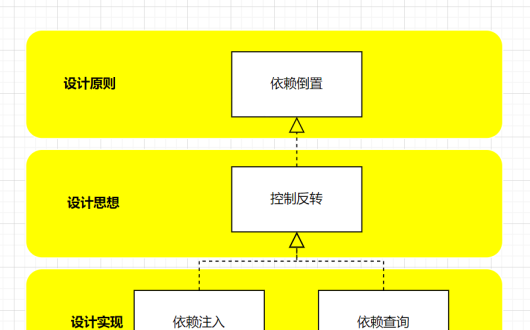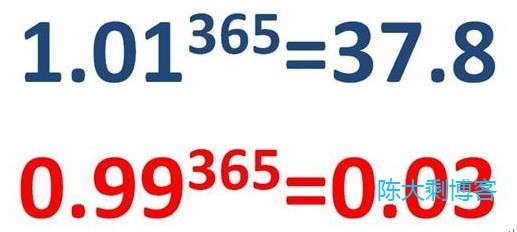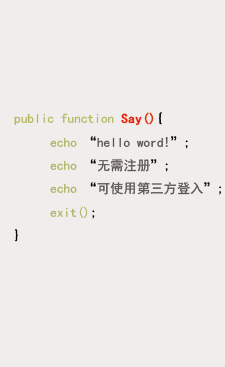SQL必知必会:Explain 执行计划
- 陈大剩
- 2023-07-30 21:58:30
- 2376

Explain有什么用
当 Explain 与 SQL 语句一起使用时,MySQL 会显示来自优化器关于 SQL 执行的信息。也就是说,MySQL解释了它将如何处理该语句,包括如何连接表以及什么顺序连接表等。
- 表的加载顺序
sql的查询类型- 可能用到哪些索引,哪些索引又被实际使用
- 表与表之间的引用关系
- 一个表中有多少行被优化器查询
- …..
Explain有哪些信息
Explain 执行计划包含字段信息如下:分别是 id 、select_type、table、partitions、type、possible_keys、key、key_len、ref、rows、filtered、Extra12个字段。
下边结合具体的SQL示例,详细的解读每个字段以及每个字段中不同参数的含义,以下所有示例数据库版本为MySQL.5.7.32。
mysql >select version() from dual;
+------------+
| version() |
+------------+
| 5.7.32-log |
+------------+
我们创建三张表 one、two、three,表之间的关系one.two_id = two.two_id AND two.three_id = three.three_id。
Explain执行计划详解
一、id
id::表示查询中执行 select 子句或者操作表的顺序,**id的值越大,代表优先级越高,越先执行**。id大致会出现 3种情况:
1、id 相同
看到三条记录的 id 都相同,可以理解成这三个表为一组,具有同样的优先级,执行顺序由上而下,具体顺序由优化器决定。
mysql >EXPLAIN SELECT * FROM one o,two t, three r WHERE o.two_id = t.two_id AND t.three_id = r.three_id;
+----+-------------+-------+------------+--------+---------------+---------+---------+----------------------+------+----------+----------------------------------------------------+
| id | select_type | table | partitions | type | possible_keys | key | key_len | ref | rows | filtered | Extra |
+----+-------------+-------+------------+--------+---------------+---------+---------+----------------------+------+----------+----------------------------------------------------+
| 1 | SIMPLE | o | NULL | ALL | NULL | NULL | NULL | NULL | 2 | 100 | NULL |
| 1 | SIMPLE | t | NULL | ALL | PRIMARY | NULL | NULL | NULL | 2 | 50 | Using where; Using join buffer (Block Nested Loop) |
| 1 | SIMPLE | r | NULL | eq_ref | PRIMARY | PRIMARY | 4 | xin-slave.t.three_id | 1 | 100 | NULL |
+----+-------------+-------+------------+--------+---------------+---------+---------+----------------------+------+----------+----------------------------------------------------+
2、id 不同
如果我们的 SQL 中存在子查询,那么 id 的序号会递增,id 值越大优先级越高,越先被执行 。当三个表依次嵌套,发现最里层的子查询 id 最大,最先执行。
mysql > EXPLAIN select * from one o where o.two_id = (select t.two_id from two t where t.three_id = (select r.three_id from three r where r.three_name='我是第三表2'));
+----+-------------+-------+------------+------+---------------+------+---------+------+------+----------+-------------+
| id | select_type | table | partitions | type | possible_keys | key | key_len | ref | rows | filtered | Extra |
+----+-------------+-------+------------+------+---------------+------+---------+------+------+----------+-------------+
| 1 | PRIMARY | o | NULL | ALL | NULL | NULL | NULL | NULL | 2 | 50 | Using where |
| 2 | SUBQUERY | t | NULL | ALL | NULL | NULL | NULL | NULL | 2 | 50 | Using where |
| 3 | SUBQUERY | r | NULL | ALL | NULL | NULL | NULL | NULL | 2 | 50 | Using where |
+----+-------------+-------+------------+------+---------------+------+---------+------+------+----------+-------------+
3、以上两种同时存在
将上边的SQL稍微修改一下,增加一个子查询,发现id的以上两种同时存在。相同id划分为一组,这样就有三个组,同组的从上往下顺序执行,不同组id值越大,优先级越高,越先执行。
mysql >EXPLAIN select * from one o where o.two_id = (select t.two_id from two t where t.three_id = (select r.three_id from three r where r.three_name='我是第三表2')) AND o.one_id in(select one_id from one where o.one_name'我是第一表');
+----+-------------+-------+------------+--------+---------------+---------+---------+--------------------+------+----------+-------------+
| id | select_type | table | partitions | type | possible_keys | key | key_len | ref | rows | filtered | Extra |
+----+-------------+-------+------------+--------+---------------+---------+---------+--------------------+------+----------+-------------+
| 1 | PRIMARY | o | NULL | ALL | PRIMARY | NULL | NULL | NULL | 2 | 50 | Using where |
| 1 | PRIMARY | one | NULL | eq_ref | PRIMARY | PRIMARY | 4 | xin-slave.o.one_id | 1 | 100 | Using index |
| 2 | SUBQUERY | t | NULL | ALL | NULL | NULL | NULL | NULL | 2 | 50 | Using where |
| 3 | SUBQUERY | r | NULL | ALL | NULL | NULL | NULL | NULL | 2 | 50 | Using where |
+----+-------------+-------+------------+--------+---------------+---------+---------+--------------------+------+----------+-------------+
二、select_type
select_type:表示select查询的类型,主要是用于区分各种复杂的查询,例如:普通查询、联合查询、子查询等。
1、SIMPLE
SIMPLE:表示最简单的 select 查询语句,也就是在查询中不包含子查询或者union交并差集等操作。
2、PRIMARY
PRIMARY:当查询语句中包含任何复杂的子部分,最外层查询则被标记为PRIMARY。
3、SUBQUERY
SUBQUERY:当select或where列表中包含了子查询,该子查询被标记为:SUBQUERY。
4、DERIVED
DERIVED:表示包含在from子句中的子查询的select,在我们的from列表中包含的子查询会被标记为derived。
5、UNION
UNION:如果union后边又出现的select语句,则会被标记为union;若union包含在from子句的子查询中,外层select将被标记为derived。
6、UNION RESULT
UNION RESULT:代表从union的临时表中读取数据,而table列的<union1,4>表示用第一个和第四个select的结果进行union操作。
mysql >EXPLAIN select t.two_name, ( select one.one_id from one) o from (select two_id,two_name from two where two_name =') t union (select r.three_name,r.three_id from three r);
+------+--------------+------------+------------+-------+---------------+---------+---------+------+------+----------+-----------------+
| id | select_type | table | partitions | type | possible_keys | key | key_len | ref | rows | filtered | Extra |
+------+--------------+------------+------------+-------+---------------+---------+---------+------+------+----------+-----------------+
| 1 | PRIMARY | two | NULL | ALL | NULL | NULL | NULL | NULL | 2 | 50 | Using where |
| 2 | SUBQUERY | one | NULL | index | NULL | PRIMARY | 4 | NULL | 2 | 100 | Using index |
| 4 | UNION | r | NULL | ALL | NULL | NULL | NULL | NULL | 2 | 100 | NULL |
| NULL | UNION RESULT | <union1,4> | NULL | ALL | NULL | NULL | NULL | NULL | NULL | NULL | Using temporary |
+------+--------------+------------+------------+-------+---------------+---------+---------+------+------+----------+-----------------+
三、table
查询的表名,并不一定是真实存在的表,有别名显示别名,也可能为临时表,例如上边的DERIVED、<union1,4>等。
四、partitions
查询时匹配到的分区信息,对于非分区表值为NULL,当查询的是分区表时,partitions显示分区表命中的分区情况。
+----+-------------+----------------+---------------------------------+-------+---------------+---------+---------+------+------+----------+-------------+
| id | select_type | table | partitions | type | possible_keys | key | key_len | ref | rows | filtered | Extra |
+----+-------------+----------------+---------------------------------+-------+---------------+---------+---------+------+------+----------+-------------+
| 1 | SIMPLE | one | p201801,p201802,p201803,p300012 | index | NULL | PRIMARY | 9 | NULL | 3 | 100 | Using index |
+----+-------------+----------------+---------------------------------+-------+---------------+---------+---------+------+------+----------+-------------+
五、type
type:查询使用了何种类型,它在SQL优化中是一个非常重要的指标,以下性能从好到坏依次是:system>const>eq_ref>ref>ref_or_null>index_merge>unique_subquery>index_subquery>range>index>ALL
1、system
system: 当表仅有一行记录时(系统表),数据量很少,往往不需要进行磁盘IO,速度非常快。
2、const
const:表示查询时命中primary key主键或者unique唯一索引,或者被连接的部分是一个常量(const)值。这类扫描效率极高,返回数据量少,速度非常快。
mysql >EXPLAIN SELECT * from three where three_id=1;
+----+-------------+-------+------------+-------+---------------+---------+---------+-------+------+----------+-------+
| id | select_type | table | partitions | type | possible_keys | key | key_len | ref | rows | filtered | Extra |
+----+-------------+-------+------------+-------+---------------+---------+---------+-------+------+----------+-------+
| 1 | SIMPLE | three | NULL | const | PRIMARY | PRIMARY | 4 | const | 1 | 100 | NULL |
+----+-------------+-------+------------+-------+---------------+---------+---------+-------+------+----------+-------+
3、eq_ref
eq_ref:查询时命中主键primary key或者unique key索引,type就是eq_ref。
mysql >EXPLAIN select o.one_name from one o ,two t where o.one_id = t.two_id ;
+----+-------------+-------+------------+--------+---------------+----------+---------+--------------------+------+----------+-------------+
| id | select_type | table | partitions | type | possible_keys | key | key_len | ref | rows | filtered | Extra |
+----+-------------+-------+------------+--------+---------------+----------+---------+--------------------+------+----------+-------------+
| 1 | SIMPLE | o | NULL | index | PRIMARY | idx_name | 768 | NULL | 2 | 100 | Using index |
| 1 | SIMPLE | t | NULL | eq_ref | PRIMARY | PRIMARY | 4 | xin-slave.o.one_id | 1 | 100 | Using index |
+----+-------------+-------+------------+--------+---------------+----------+---------+--------------------+------+----------+-------------+
4、ref
ref:区别于eq_ref,ref表示使用非唯一性索引,会找到很多个符合条件的行。
mysql >select o.one_id from one o where o.one_name ='xin';
+--------+
| one_id |
+--------+
| 1 |
| 3 |
+--------+
mysql >EXPLAIN select o.one_id from one o where o.one_name ='xin';
+----+-------------+-------+------------+------+---------------+----------+---------+-------+------+----------+-------------+
| id | select_type | table | partitions | type | possible_keys | key | key_len | ref | rows | filtered | Extra |
+----+-------------+-------+------------+------+---------------+----------+---------+-------+------+----------+-------------+
| 1 | SIMPLE | o | NULL | ref | idx_name | idx_name | 768 | const | 1 | 100 | Using index |
+----+-------------+-------+------------+------+---------------+----------+---------+-------+------+----------+-------------+
5、ref_or_null
ref_or_null:这种连接类型类似于 ref,区别在于MySQL会额外搜索包含NULL值的行。
mysql >EXPLAIN select o.one_id from one o where o.one_name ='xin'OR o.one_name IS NULL;
+----+-------------+-------+------------+-------------+---------------+----------+---------+-------+------+----------+--------------------------+
| id | select_type | table | partitions | type | possible_keys | key | key_len | ref | rows | filtered | Extra |
+----+-------------+-------+------------+-------------+---------------+----------+---------+-------+------+----------+--------------------------+
| 1 | SIMPLE | o | NULL | ref_or_null | idx_name | idx_name | 768 | const | 3 | 100 | Using where; Using index |
+----+-------------+-------+------------+-------------+---------------+----------+---------+-------+------+----------+--------------------------+
6、index_merge
index_merge:使用了索引合并优化方法,查询使用了两个以上的索引。
下边示例中同时使用到主键one_id和 字段one_name的idx_name索引 。
mysql >EXPLAIN select * from one o where o.one_id>1 and o.one_name ='xin';
+----+-------------+-------+------------+-------------+------------------+------------------+---------+------+------+----------+------------------------------------------------+
| id | select_type | table | partitions | type | possible_keys | key | key_len | ref | rows | filtered | Extra |
+----+-------------+-------+------------+-------------+------------------+------------------+---------+------+------+----------+------------------------------------------------+
| 1 | SIMPLE | o | NULL | index_merge | PRIMARY,idx_name | idx_name,PRIMARY | 772,4 | NULL | 1 | 100 | Using intersect(idx_name,PRIMARY); Using where |
+----+-------------+-------+------------+-------------+------------------+------------------+---------+------+------+----------+------------------------------------------------+
7、unique_subquery
unique_subquery:替换下面的IN子查询,子查询返回不重复的集合。
value IN (SELECT primary_key FROM single_table WHERE some_expr)
8、index_subquery
index_subquery:区别于unique_subquery,用于非唯一索引,可以返回重复值。
value IN (SELECT key_column FROM single_table WHERE some_expr)
9、range
range:使用索引选择行,仅检索给定范围内的行。简单点说就是针对一个有索引的字段,给定范围检索数据。在where语句中使用bettween...and、<、> 、<=、in等条件查询type都是range。
举个栗子:three表中three_id为唯一主键,user_id普通字段未建索引。
mysql >EXPLAIN SELECT * from three where three_id BETWEEN 2 AND 3;
+----+-------------+-------+------------+-------+---------------+---------+---------+------+------+----------+-------------+
| id | select_type | table | partitions | type | possible_keys | key | key_len | ref | rows | filtered | Extra |
+----+-------------+-------+------------+-------+---------------+---------+---------+------+------+----------+-------------+
| 1 | SIMPLE | three | NULL | range | PRIMARY | PRIMARY | 4 | NULL | 1 | 100 | Using where |
+----+-------------+-------+------------+-------+---------------+---------+---------+------+------+----------+-------------+
从结果中看到只有对设置了索引的字段,做范围检索type才是range。
mysql >EXPLAIN SELECT * from three where user_id BETWEEN 2 AND 3;
+----+-------------+-------+------------+------+---------------+------+---------+------+------+----------+-------------+
| id | select_type | table | partitions | type | possible_keys | key | key_len | ref | rows | filtered | Extra |
+----+-------------+-------+------------+------+---------------+------+---------+------+------+----------+-------------+
| 1 | SIMPLE | three | NULL | ALL | NULL | NULL | NULL | NULL | 3 | 33.33 | Using where |
+----+-------------+-------+------------+------+---------------+------+---------+------+------+----------+-------------+
10、index
index:Index与ALL其实都是读全表,区别在于index是遍历索引树读取,而ALL是从硬盘中读取。
下边示例:three_id为主键,不带where条件全表查询 ,type结果为index。
mysql >EXPLAIN SELECT three_id from three ;
+----+-------------+-------+------------+-------+---------------+---------+---------+------+------+----------+-------------+
| id | select_type | table | partitions | type | possible_keys | key | key_len | ref | rows | filtered | Extra |
+----+-------------+-------+------------+-------+---------------+---------+---------+------+------+----------+-------------+
| 1 | SIMPLE | three | NULL | index | NULL | PRIMARY | 4 | NULL | 1 | 100 | Using index |
+----+-------------+-------+------------+-------+---------------+---------+---------+------+------+----------+-------------+
11、ALL
ALL:将遍历全表以找到匹配的行,性能最差。
mysql >EXPLAIN SELECT * from two ;
+----+-------------+-------+------------+------+---------------+------+---------+------+------+----------+-------+
| id | select_type | table | partitions | type | possible_keys | key | key_len | ref | rows | filtered | Extra |
+----+-------------+-------+------------+------+---------------+------+---------+------+------+----------+-------+
| 1 | SIMPLE | two | NULL | ALL | NULL | NULL | NULL | NULL | 2 | 100 | NULL |
+----+-------------+-------+------------+------+---------------+------+---------+------+------+----------+-------+
六、possible_keys
possible_keys:表示在MySQL中通过哪些索引,能让我们在表中找到想要的记录,一旦查询涉及到的某个字段上存在索引,则索引将被列出,但这个索引并不定一会是最终查询数据时所被用到的索引。具体请参考上边的例子。
七、key
key:区别于possible_keys,key是查询中实际使用到的索引,若没有使用索引,显示为NULL。具体请参考上边的例子。
当
type为index_merge时,可能会显示多个索引。
八、key_len
key_len:表示查询用到的索引长度(字节数),原则上长度越短越好 。
- 单列索引,那么需要将整个索引长度算进去;
- 多列索引,不是所有列都能用到,需要计算查询中实际用到的列。
注意:
key_len只计算where条件中用到的索引长度,而排序和分组即便是用到了索引,也不会计算到key_len中。
九、ref
ref:常见的有:const,func,null,字段名。
- 当使用常量等值查询,显示
const, - 当关联查询时,会显示相应关联表的
关联字段 - 如果查询条件使用了
表达式、函数,或者条件列发生内部隐式转换,可能显示为func - 其他情况
null
十、rows
rows:以表的统计信息和索引使用情况,估算要找到我们所需的记录,需要读取的行数。
这是评估SQL性能的一个比较重要的数据,mysql需要扫描的行数,很直观的显示SQL性能的好坏,一般情况下rows值越小越好。
mysql >EXPLAIN SELECT * from three;
+----+-------------+-------+------------+------+---------------+------+---------+------+------+----------+-------+
| id | select_type | table | partitions | type | possible_keys | key | key_len | ref | rows | filtered | Extra |
+----+-------------+-------+------------+------+---------------+------+---------+------+------+----------+-------+
| 1 | SIMPLE | three | NULL | ALL | NULL | NULL | NULL | NULL | 3 | 100 | NULL |
+----+-------------+-------+------------+------+---------------+------+---------+------+------+----------+-------+
十一、filtered
filtered这个是一个百分比的值,表里符合条件的记录数的百分比。简单点说,这个字段表示存储引擎返回的数据在经过过滤后,剩下满足条件的记录数量的比例。
在MySQL.5.7版本以前想要显示filtered需要使用explain extended命令。MySQL.5.7后,默认explain直接显示partitions和filtered的信息。
十二、Extra
Extra:不适合在其他列中显示的信息,Explain中的很多额外的信息会在Extra字段显示。
1、Using index
Using index:我们在相应的select操作中使用了覆盖索引,通俗一点讲就是查询的列被索引覆盖,使用到覆盖索引查询速度会非常快,SQl优化中理想的状态。
什么又是覆盖索引?
一条SQL只需要通过索引就可以返回,我们所需要查询的数据(一个或几个字段),而不必通过二级索引,查到主键之后再通过主键查询整行数据(select *)。
one_id表为主键
mysql >EXPLAIN SELECT one_id from one ;
+----+-------------+-------+------------+-------+---------------+------------+---------+------+------+----------+-------------+
| id | select_type | table | partitions | type | possible_keys | key | key_len | ref | rows | filtered | Extra |
+----+-------------+-------+------------+-------+---------------+------------+---------+------+------+----------+-------------+
| 1 | SIMPLE | one | NULL | index | NULL | idx_two_id | 5 | NULL | 3 | 100 | Using index |
+----+-------------+-------+------------+-------+---------------+------------+---------+------+------+----------+-------------+
注意:想要使用到覆盖索引,我们在select时只取出需要的字段,不可select *,而且该字段建了索引。
mysql >EXPLAIN SELECT * from one ;
+----+-------------+-------+------------+------+---------------+------+---------+------+------+----------+-------+
| id | select_type | table | partitions | type | possible_keys | key | key_len | ref | rows | filtered | Extra |
+----+-------------+-------+------------+------+---------------+------+---------+------+------+----------+-------+
| 1 | SIMPLE | one | NULL | ALL | NULL | NULL | NULL | NULL | 3 | 100 | NULL |
+----+-------------+-------+------------+------+---------------+------+---------+------+------+----------+-------+
2、Using where
Using where:查询时未找到可用的索引,进而通过where条件过滤获取所需数据,但要注意的是并不是所有带where语句的查询都会显示Using where。
下边示例create_time并未用到索引,type为ALL,即MySQL通过全表扫描后再按where条件筛选数据。
mysql >EXPLAIN SELECT one_name from one where create_time ='2020-05-18';
+----+-------------+-------+------------+------+---------------+------+---------+------+------+----------+-------------+
| id | select_type | table | partitions | type | possible_keys | key | key_len | ref | rows | filtered | Extra |
+----+-------------+-------+------------+------+---------------+------+---------+------+------+----------+-------------+
| 1 | SIMPLE | one | NULL | ALL | NULL | NULL | NULL | NULL | 3 | 33.33 | Using where |
+----+-------------+-------+------------+------+---------------+------+---------+------+------+----------+-------------+
3、Using temporary
Using temporary:表示查询后结果需要使用临时表来存储,一般在排序或者分组查询时用到。
mysql >EXPLAIN SELECT one_name from one where one_id in (1,2) group by one_name;
+----+-------------+-------+------------+------+---------------+------+---------+------+------+----------+-------------+
| id | select_type | table | partitions | type | possible_keys | key | key_len | ref | rows | filtered | Extra |
+----+-------------+-------+------------+------+---------------+------+---------+------+------+----------+-------------+
| 1 | SIMPLE | one | NULL | range| NULL | NULL | NULL | NULL | 3 | 33.33 | Using where; Using temporary; Using filesort |
+----+-------------+-------+------------+------+---------------+------+---------+------+------+----------+-------------+
4、Using filesort
Using filesort:表示无法利用索引完成的排序操作,也就是ORDER BY的字段没有索引,通常这样的SQL都是需要优化的。
mysql >EXPLAIN SELECT one_id from one ORDER BY create_time;
+----+-------------+-------+------------+------+---------------+------+---------+------+------+----------+----------------+
| id | select_type | table | partitions | type | possible_keys | key | key_len | ref | rows | filtered | Extra |
+----+-------------+-------+------------+------+---------------+------+---------+------+------+----------+----------------+
| 1 | SIMPLE | one | NULL | ALL | NULL | NULL | NULL | NULL | 3 | 100 | Using filesort |
+----+-------------+-------+------------+------+---------------+------+---------+------+------+----------+----------------+
如果ORDER BY字段有索引就会用到覆盖索引,相比执行速度快很多。
mysql >EXPLAIN SELECT one_id from one ORDER BY one_id;
+----+-------------+-------+------------+-------+---------------+---------+---------+------+------+----------+-------------+
| id | select_type | table | partitions | type | possible_keys | key | key_len | ref | rows | filtered | Extra |
+----+-------------+-------+------------+-------+---------------+---------+---------+------+------+----------+-------------+
| 1 | SIMPLE | one | NULL | index | NULL | PRIMARY | 4 | NULL | 3 | 100 | Using index |
+----+-------------+-------+------------+-------+---------------+---------+---------+------+------+----------+-------------+
5、Using join buffer
Using join buffer:在我们联表查询的时候,如果表的连接条件没有用到索引,需要有一个连接缓冲区来存储中间结果。
先看一下有索引的情况:连接条件one_name、two_name都用到索引。
mysql >EXPLAIN SELECT one_name from one o,two t where o.one_name = t.two_name;
+----+-------------+-------+------------+-------+---------------+----------+---------+----------------------+------+----------+--------------------------+
| id | select_type | table | partitions | type | possible_keys | key | key_len | ref | rows | filtered | Extra |
+----+-------------+-------+------------+-------+---------------+----------+---------+----------------------+------+----------+--------------------------+
| 1 | SIMPLE | o | NULL | index | idx_name | idx_name | 768 | NULL | 3 | 100 | Using where; Using index |
| 1 | SIMPLE | t | NULL | ref | idx_name | idx_name | 768 | xin-slave.o.one_name | 1 | 100 | Using index |
+----+-------------+-------+------------+-------+---------------+----------+---------+----------------------+------+----------+--------------------------+
接下来删掉 连接条件one_name、two_name的字段索引。发现Extra列变成Using join buffer,type均为全表扫描,这也是SQL优化中需要注意的地方。
mysql >EXPLAIN SELECT one_name from one o,two t where o.one_name = t.two_name;
+----+-------------+-------+------------+------+---------------+------+---------+------+------+----------+----------------------------------------------------+
| id | select_type | table | partitions | type | possible_keys | key | key_len | ref | rows | filtered | Extra |
+----+-------------+-------+------------+------+---------------+------+---------+------+------+----------+----------------------------------------------------+
| 1 | SIMPLE | t | NULL | ALL | NULL | NULL | NULL | NULL | 2 | 100 | NULL |
| 1 | SIMPLE | o | NULL | ALL | NULL | NULL | NULL | NULL | 3 | 33.33 | Using where; Using join buffer (Block Nested Loop) |
+----+-------------+-------+------------+------+---------------+------+---------+------+------+----------+----------------------------------------------------+
6、Impossible where
Impossible where:表示在我们用不太正确的where语句,导致没有符合条件的行。
mysql >EXPLAIN SELECT one_name from one WHERE 1=2;
+----+-------------+-------+------------+------+---------------+------+---------+------+------+----------+------------------+
| id | select_type | table | partitions | type | possible_keys | key | key_len | ref | rows | filtered | Extra |
+----+-------------+-------+------------+------+---------------+------+---------+------+------+----------+------------------+
| 1 | SIMPLE | NULL | NULL | NULL | NULL | NULL | NULL | NULL | NULL | NULL | Impossible WHERE |
+----+-------------+-------+------------+------+---------------+------+---------+------+------+----------+------------------+
7、No tables used
No tables used:我们的查询语句中没有FROM子句,或者有FROM DUAL子句。
mysql >EXPLAIN select now();
+----+-------------+-------+------------+------+---------------+------+---------+------+------+----------+----------------+
| id | select_type | table | partitions | type | possible_keys | key | key_len | ref | rows | filtered | Extra |
+----+-------------+-------+------------+------+---------------+------+---------+------+------+----------+----------------+
| 1 | SIMPLE | NULL | NULL | NULL | NULL | NULL | NULL | NULL | NULL | NULL | No tables used |
+----+-------------+-------+------------+------+---------------+------+---------+------+------+----------+----------------+
Extra列的信息非常非常多,这里就不再一一列举了,详见MySQL官方文档 :https://dev.mysql.com/doc/ref…
总结
重点看的几列:
possible_keys:可能可以利用的索引的名字。这里的索引名字是创建索引时指定的索引昵称;如果索引没有昵称,则默认显示的是索引中第一个列的名字(在本例中,它是“firstname”)。默认索引名字的含义往往不是很明显。
key:它显示了 MySQL 实际使用的索引的名字。如果它为空(或NULL),则MySQL不使用索引。
key_len:索引中被使用部分的长度,以字节计
ref:列出是通过常量(const),还是某个表的某个字段(如果是join)来过滤(通过key)的;
rows:MySQL所认为的它在找到正确的结果之前必须扫描的记录数。显然,这里最理想的数字就是1。














